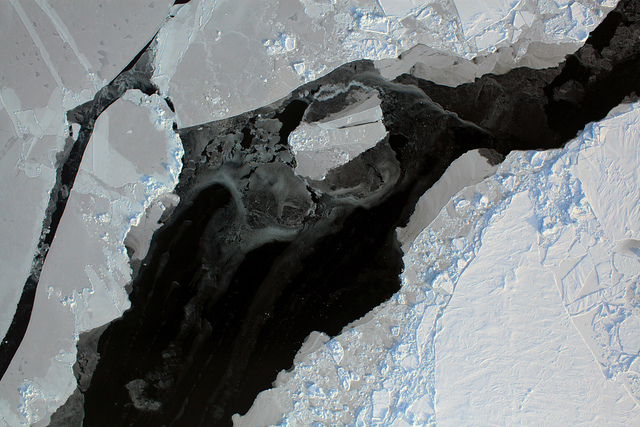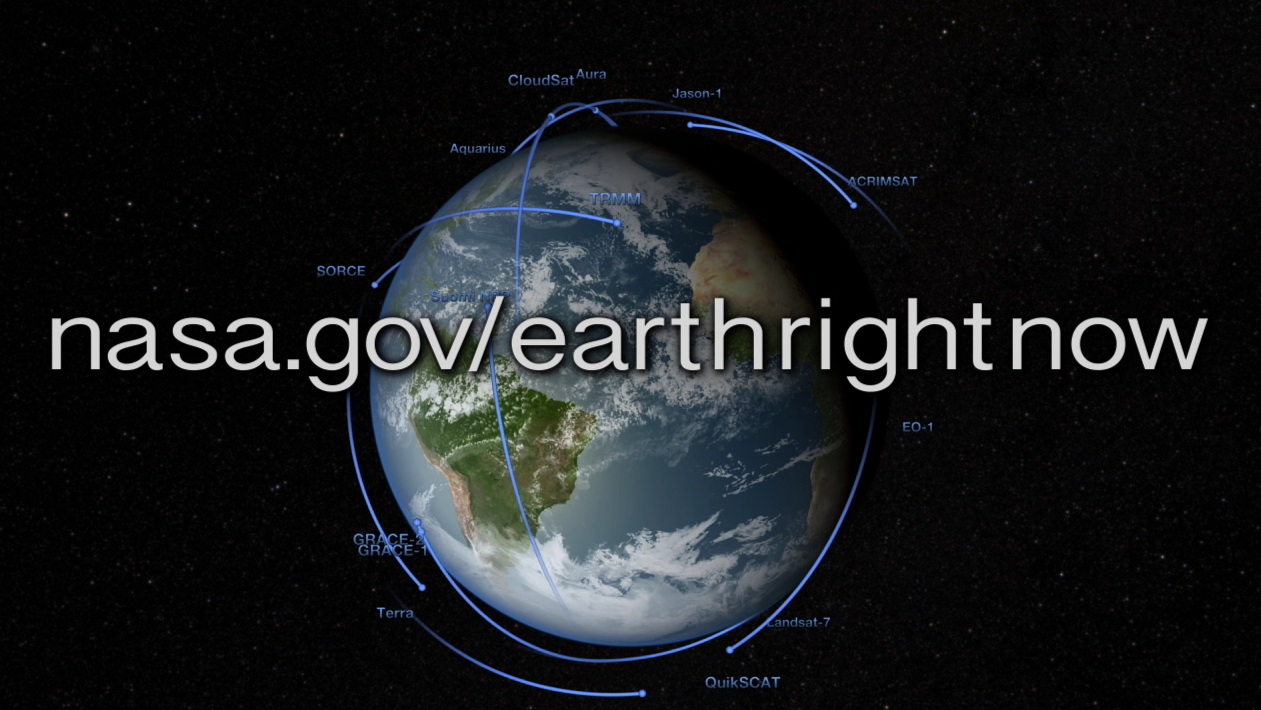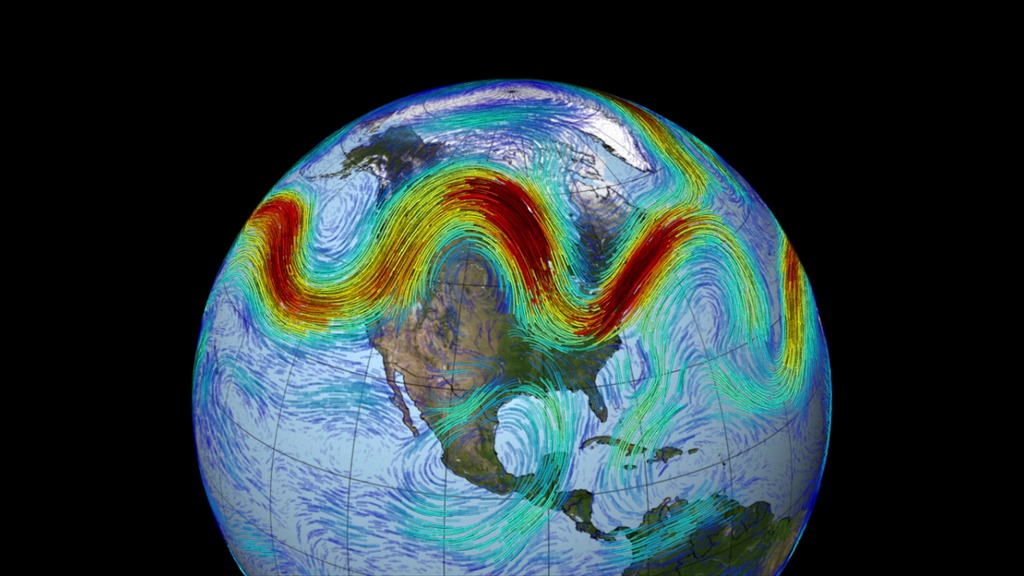The Polar Jet Stream
Meandering around the planet like a rollicking roller coaster in the sky, the Northern Hemisphere's polar jet stream is a fast-moving belt of westerly winds that traverses the lower layers of the atmosphere. The jet is created by the convergence of cold air masses descending from the Arctic and rising warm air from the tropics. Deep troughs and steep ridges emerge as the denser cold air sinks and deflects warm air regions north, giving the jet stream its wavy appearance. This pattern propagates across the mid-latitudes of North America, Europe and Asia, as pockets of cold air sporadically creep down from the Arctic - creating contrasting waves and flows that accelerate eastward due to Earth's rotation. Running from June 10 to July 8 of 1988, the visualization below uses weather and climate observations from NASA's MERRA dataset to model nearly a month of the jet stream's whirling journey over North America.

Jet Stream, Print Resolution
Credits
Please give credit for this item to:
NASA/Goddard Space Flight Center Scientific Visualization Studio
-
Animators
- Trent L. Schindler (USRA)
- Greg Shirah (NASA/GSFC)
- Horace Mitchell (NASA/GSFC)
-
Producer
- Jefferson Beck (USRA)
-
Writer
- Kayvon Sharghi (USRA)
Missions
This page is related to the following missions:Datasets used
-
Blue Marble Land Cover [Terra and Aqua: MODIS]
ID: 510Credit: The Blue Marble data is courtesy of Reto Stockli (NASA/GSFC).
See all pages that use this dataset -
MERRA
ID: 684
Note: While we identify the data sets used on this page, we do not store any further details, nor the data sets themselves on our site.
Release date
This page was originally published on Monday, October 3, 2011.
This page was last updated on Monday, March 17, 2025 at 12:01 AM EDT.
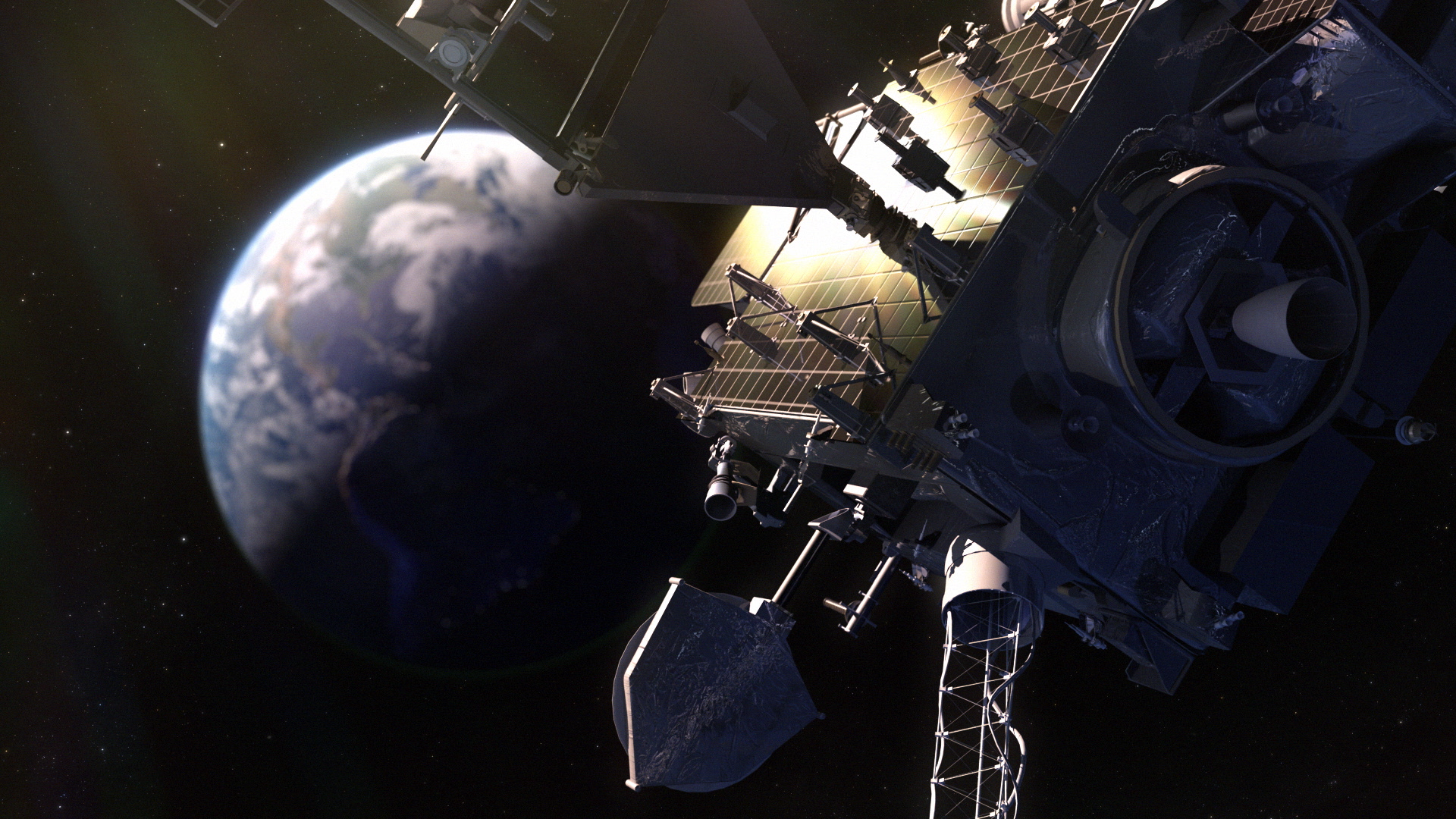
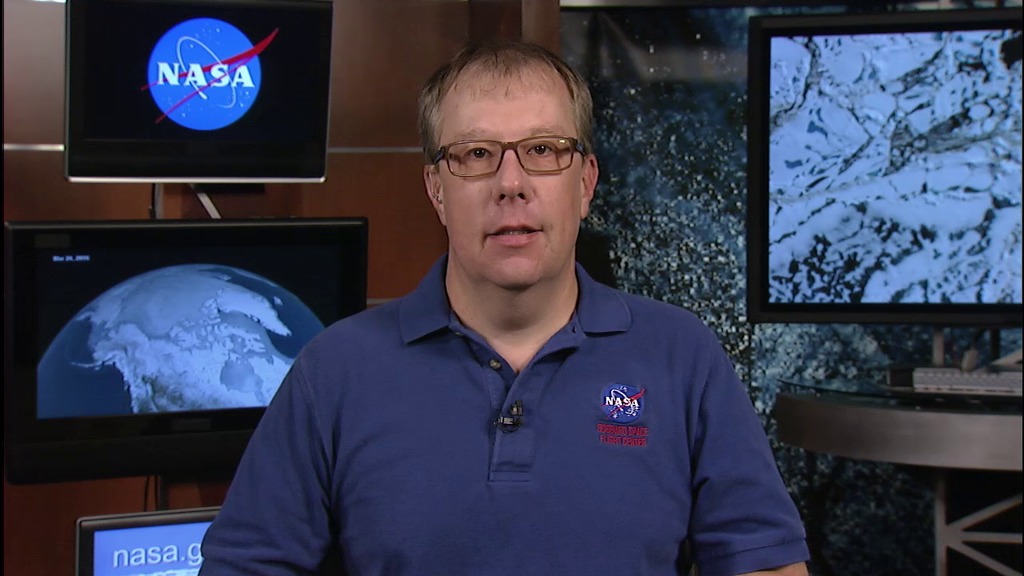
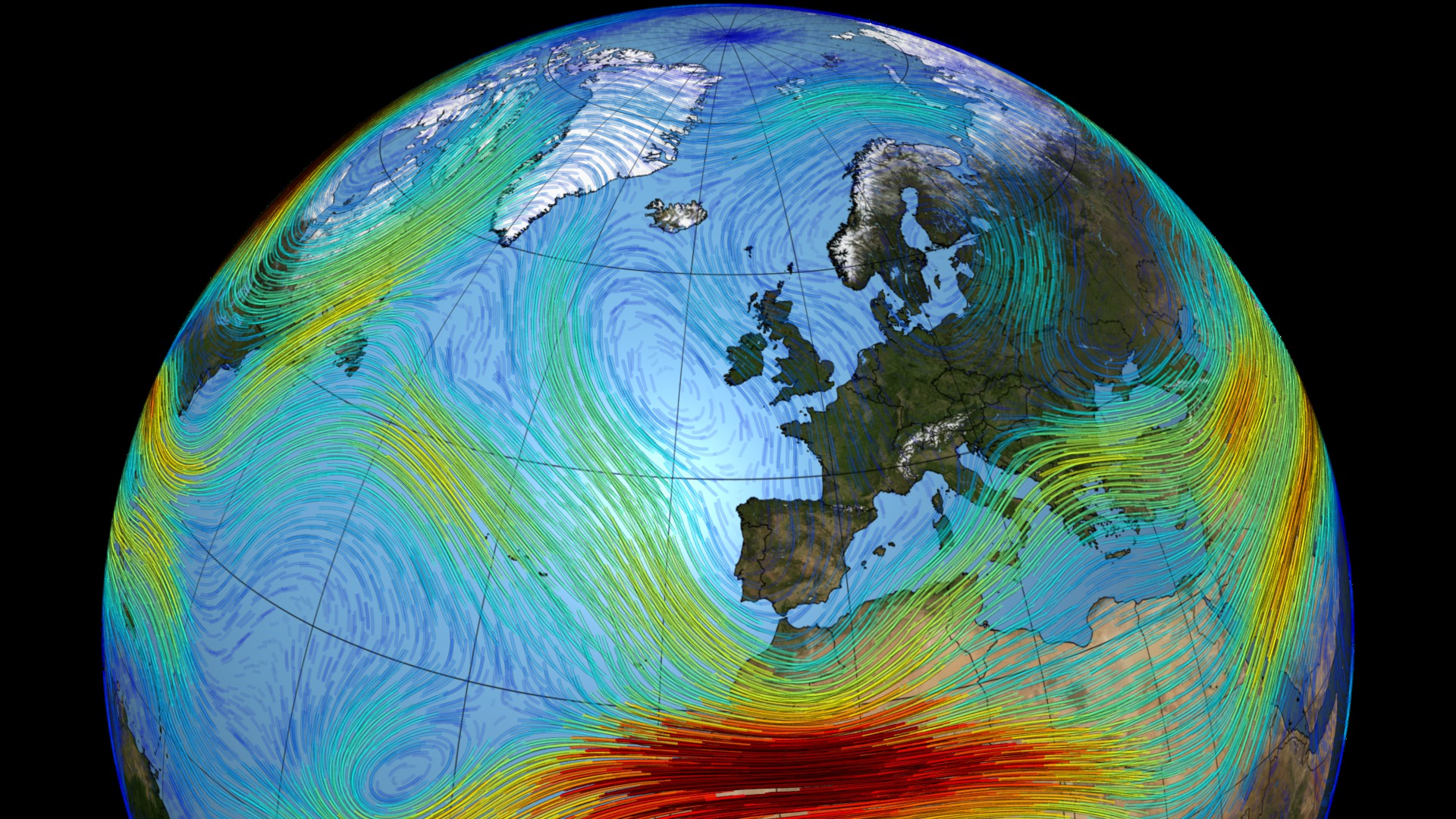
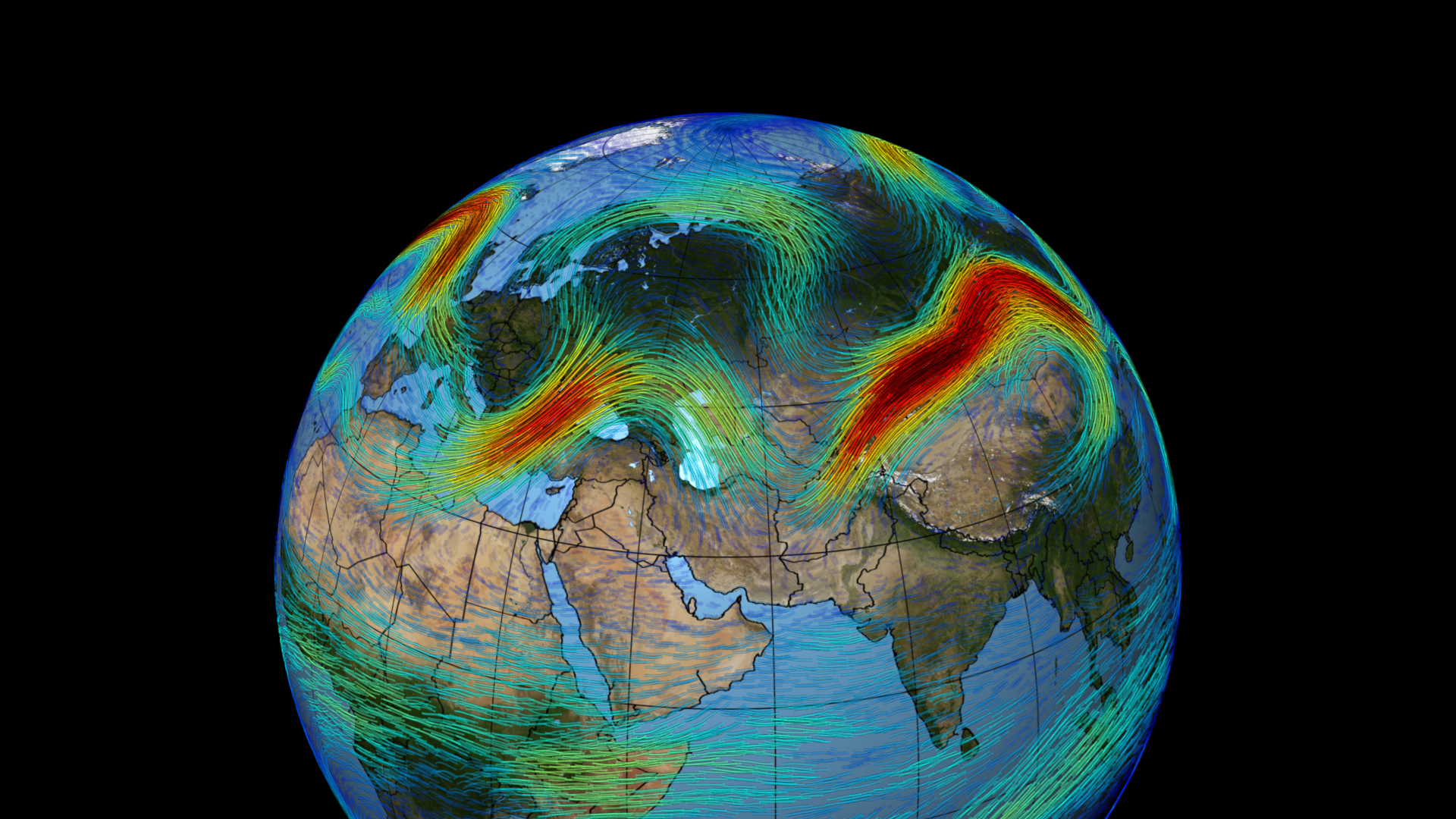
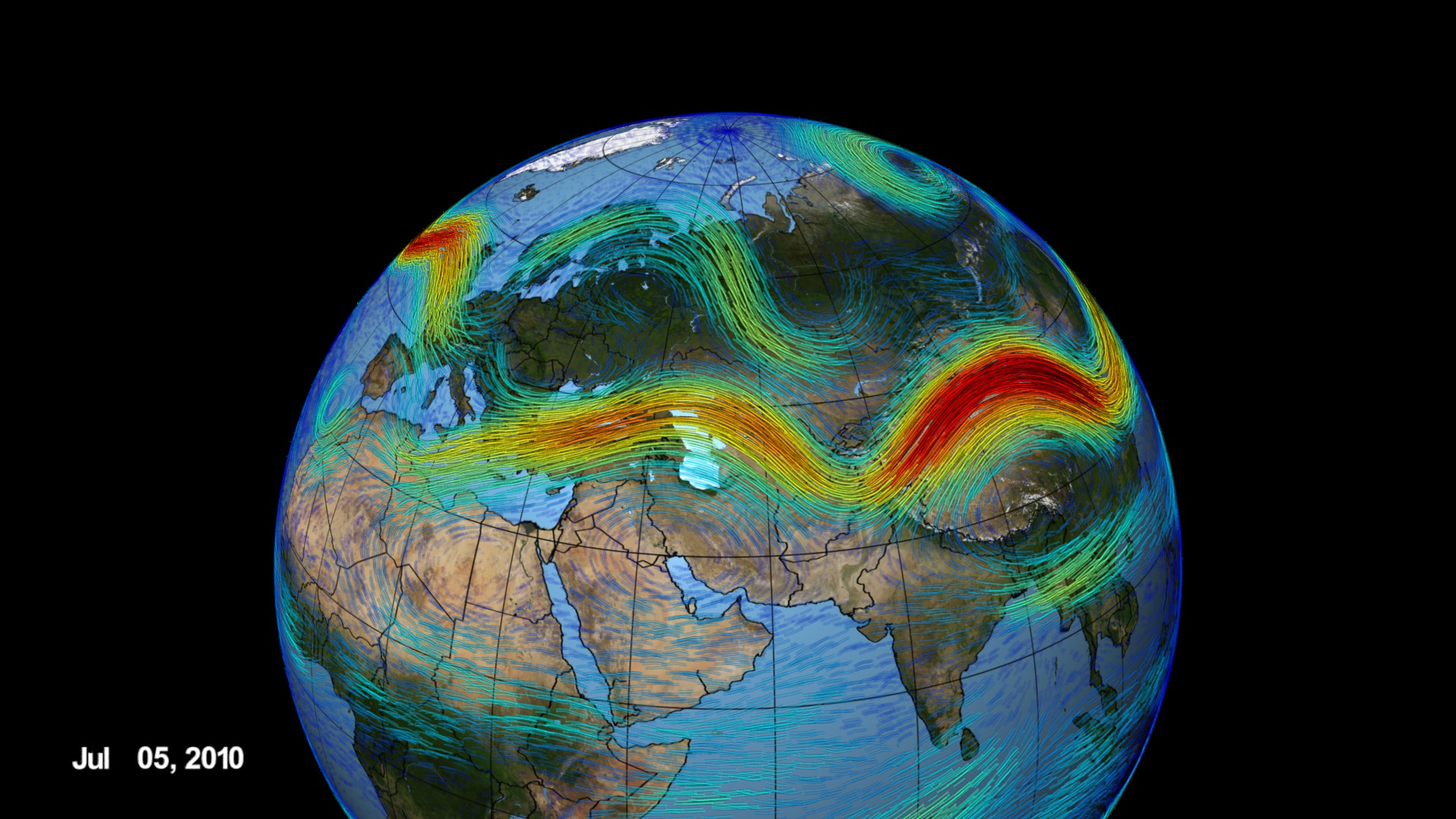
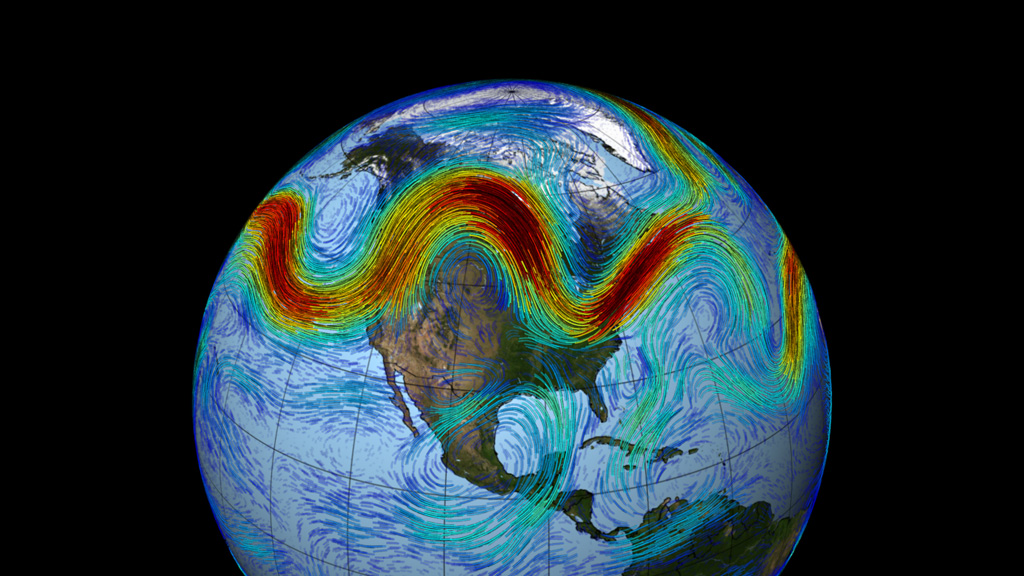
![Music: Hiraeth by Anthony Edwin Phillips [PRS], James Edward CollinsComplete transcript available.](/vis/a010000/a013300/a013309/Arctic_Min_2019_Thumbnail_LKW.png)
